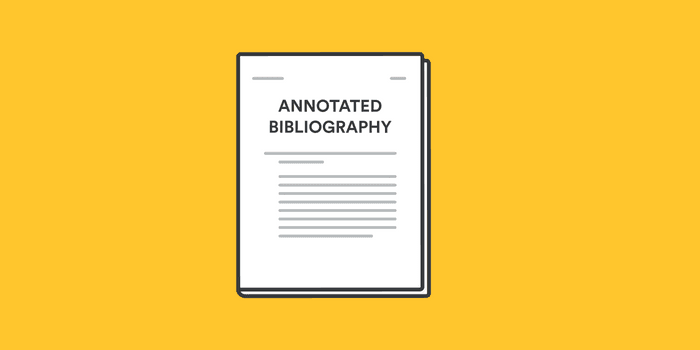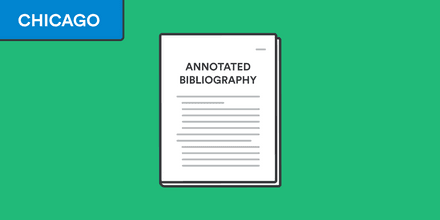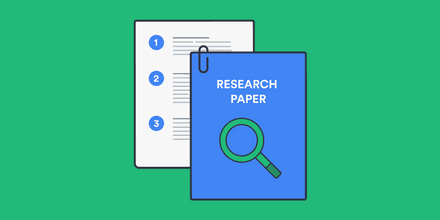
Annotated bibliographies are often assigned in high school and college writing classes. In this blog post, we discuss what an annotated bibliography is and how to write one.
What is an annotated bibliography?
A annotated bibliography is a list of citations for books, journals, periodicals, websites, articles, or other sources, accompanied by a descriptive paragraph that summarizes and evaluates each source. This descriptive paragraph is called an annotation.
Descriptive paragraphs typically range between 100 and 300 words. Ultimately, an annotation informs the reader about the source's accuracy, quality, and relevance to your research.
Annotated bibliographies can form part of a larger project or they may be assigned as a single activity to help you learn how to evaluate credible sources.
How to write an annotated bibliography
In this section, we break down how to write an annotated bibliography into multiple steps. Before you get started, you should always carefully read your assignment guidelines to understand what your instructor expects.
1. Find your sources
Most likely, your instructor will expect you to use peer-reviewed sources for your annotated bibliography. You can search for peer-reviewed materials in an academic database or via Google Scholar. If you need help finding sources, ask your instructor or make an appointment with a librarian who can help you navigate academic databases.
2. Evaluate your sources
Once you’ve found some materials, you’ll need to evaluate them to ensure that they are credible sources. There are different types of academic sources, but there are evaluation methods that apply to any source type.
You can use the CRAAP test to evaluate whether a source is credible or not. CRAAP stands for: currency, relevance, authority, accuracy, and purpose.
To establish a source’s currency and relevance, pay attention to when it was published. Articles in the sciences that were published 20 years ago are likely not current or relevant. Also, is the source relevant to your research?
Authority refers to both the authors’ credentials and the place where the resource was found. Peer-reviewed works will typically list an author’s affiliation or job title. If you found the source in one of the library’s databases, then it’s most likely authoritative. If not, consider details like the URL (does it contain .org, .edu, .gov, etc?).
To investigate a text’s accuracy, review its content. Does the source have references? Is the tone of the work objective, or is it biased? Are the work’s claims backed up by evidence? If it’s been peer-reviewed or refereed, then the accuracy has already been vetted by experts. Finally, consider the purpose of the work. Is the purpose to sell you something? To inform or persuade? Is it an opinion piece?
You can use the following CRAAP checklist for each source to determine its credibility:
🔲 Currency: When was the source published?
🔲 Relevance: Is the source relevant to your research? Does it make feasible arguments or claims?
🔲 Authority: Who wrote the source? Where did you find it?
🔲 Accuracy: Does the source have references? Is the tone objective or biased? Is it peer-reviewed?
🔲 Purpose: What is the purpose of the source, to inform or persuade? To sell you something?
3. Read your sources
After you’ve evaluated your sources, you need to take some time to read each one. Don’t just skim the contents; read each source carefully and take good notes. You’ll be able to use those notes when you write your annotations.
4. Create your citations
After you’ve read your sources, it’s a good idea to go ahead and create an accurate citation for each one. The citation style that you use will depend on your instructor’s specific guidelines, but you will most likely use MLA, APA, Harvard, or Chicago style.
Save time by using a citation generator like BibGuru to create the citations for each source. The citation should precede the annotation itself.
5. Write your annotations
Next, you should write out the first draft of your annotations. These descriptive paragraphs summarize the main argument of the source, evaluate its credibility, and discuss how the source is relevant to your larger project or to a specific research field.
Annotations are typically between 100 and 300 words. In the next section, we feature an example citation and annotation for a scholarly source. Depending on the word limit, you might include:
- A summary of the source
- A brief description of the source’s main argument(s)
- A discussion of the source’s credibility and its relationship to other works in the field
- A brief examination of the source’s limitations
- A short discussion of how you might use the source in a research paper or larger project
6. Format your bibliography
The formatting of your annotated bibliography will largely depend on the citation style that you’re using. However, annotated bibliographies typically follow the formatting conventions of other forms of academic writing:
- 1” margins
- The use of a readable font like Times New Roman (Note: APA has specific font requirements.)
- An acceptable font size, usually 11- or 12-point
- Double-spacing throughout
- Second, and subsequent, lines of bibliographic citations should be indented
- New paragraphs should be indented
7. Proofread and revise
Finally, you’ll want to proofread and revise your annotated bibliography before you turn it in. Take a close look at the citations you created and read over each annotation, looking for grammatical and stylistic errors. Consult citation guides or the Purdue Online Writing Lab (OWL) if you have further questions about citation formatting.
Example annotation for an annotated bibliography
This example features an MLA citation and a one-paragraph annotation:
Davidson, Hilda Ellis. Roles of the Northern Goddess. Routledge, 1998.
Davidson's book provides a thorough examination of Northern Europe's major roles associated with several pagan goddesses. Some roles in everyday life include agriculture, hunting, domestic art like weaving, and death. In this book, the author discusses relevant archaeological evidence, previous research, and patterns of rituals and symbols. The book includes several photographs of relevant artifacts.
This annotation from Purdue University’s Online Writing Lab (OWL) is a single paragraph summarizing a book. In a longer annotation, you would evaluate the source’s credibility and relevance, in addition to summarizing it.
Tips for annotated bibliographies
Here are some tips to help you write a solid annotated bibliography:
Meet with a librarian before you start
Before you start finding the sources for your annotated bibliography, consider meeting with a librarian who can help you with your research. College and school librarians can assist you with generating keywords, using academic databases, and evaluating the credibility of sources.
Read your sources carefully
In order to write a quality annotation, you need to carefully read each scholarly source. As you read, take note of the elements that you’d like to include in your annotation. To learn more about how to read research, take a look at our guide on how to read a scholarly source.
Use a reputable citation generator for your citations
To save time on creating citations for your annotated bibliography, use an accurate citation generator like BibGuru. BibGuru can automatically generate citations for scholarly sources in MLA, APA, Chicago, and other major citation styles.
Use clear, concise, and correct language in your annotations
When you write your annotations, be sure to use clear, concise, and correct language. Since most annotations will only be 1-2 paragraphs, you’ll need to be especially concise in your summary and evaluation.
Ask a friend, family member, or classmate to read over your final draft
To ensure that you’ve followed the assignment guidelines for your annotated bibliography and that your annotations and citations are correct, ask a friend, classmate, or family member to read over your work. This will help you catch any errors before you submit your annotated bibliography.
Frequently Asked Questions about annotated bibliographies
🥇 What is an annotated bibliography?
A annotated bibliography is a list of citations for books, journals, periodicals, websites, articles, or other sources, accompanied by a descriptive paragraph that summarizes and evaluates each source. This descriptive paragraph is called an annotation.
💬 How do you write an annotated bibliography?
You write an annotated bibliography by following these steps:
- Find your sources.
- Evaluate your sources.
- Read your sources.
- Create your citations.
- Write your annotations.
- Format your bibliography.
- Proofread and revise.
🤼 What are the parts of an annotated bibliography?
An annotated bibliography contains full bibliographic citations for sources along with an annotation for each source that summarizes and evaluates it.
🔢 What is an annotated bibliography supposed to look like?
Although the overall format of an annotated bibliography will depend on which citation style you use, most will feature citations followed by annotations. In other words, for each source, you write out the full bibliographic citation and then, below that, the annotation.
📌 How long should an annotated bibliography be?
The length of your annotated bibliography will depend on the assignment guidelines. Many annotated bibliography assignments ask you to examine around 8-10 sources. Annotations are typically between 100 and 300 words.


